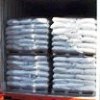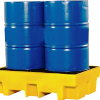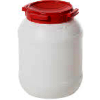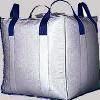Pure Aluminium Magnesium Silicate or Magnesium Aluminum Silicate BP Ph Eur USP Grade Manufacturers Suppliers, India
Anmol Chemicals are manufacturers of Specialty Chemicals and Pharmaceutical Excipients, in India. Anmol Chemicals Group has manufacturing facilities spread across India, representatives in Houston Chicago USA and toll manufacturers in China. We make IP, BP, USP, Ph Eur, FCC or Food Grade, ACS, AR or Analytical Reagent Grade, LR or Laboratory Reagent Grade and Pure Grades of various chemicals. All our items are analyzed to meet the required standards.
Our manufacturing facility is FDA GMP approved and ISO-9001, ISO 14000, OHSAS 18000, ISO 22000, FSSAI HACCP certified. We are offering products manufactured as per Kosher and Halal approved method. We are registered with "Reach" for export to European countries.
CAS No.: 12511-31-8, EC Code EINECS: 215-478-8 or 308-996-1
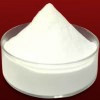
Magnesium Aluminum Silicate USP NF Grade
Magnesium Aluminum Silicate is a blend of colloidal montmorillonite and saponite that has been processed to remove grit and non-swellable ore components.
The requirements for viscosity and ratio of aluminum content to magnesium content differ for the several types of Magnesium Aluminum Silicate, as set forth in the accompanying table.
Type |
Viscosity(cps) |
(Al content)/(Mg content) |
|
Minimum to Maximum |
Minimum to Maximum |
IA |
0225 to 0600 |
0.5 to 1.2 |
IB |
0150 to 0450 |
0.5 to 1.2 |
IC |
0800 to 2200 |
0.5 to 1.2 |
IIA |
0100 to 0300 |
1.4 to 2.8 |
Identification: Add 2 g in small portions to 100 mL of water, with intense agitation. Allow to stand for 12 hours to ensure complete hydration. Place 2 mL of the resulting mixture on a suitable glass slide, and allow to air-dry at room temperature to produce an oriented film. Place the slide in a vacuum desiccator over a free surface of ethylene glycol. Evacuate the desiccator, and close the stopcock so that the ethylene glycol saturates the desiccator chamber. Allow to stand for 12 hours. Record the Xray diffraction pattern, and calculate the d values: the largest peak corresponds to a d value between 15.0 and 17.2 angstrom units. Prepare a random powder specimen of Magnesium Aluminum Silicate, record the X-ray diffraction pattern, and determine the d values in the region between 1.48 and 1.54 angstrom units: peaks are found between 1.492 and 1.504 angstrom units and between 1.510 and 1.540 angstrom units.
Viscosity: After determining the Loss on drying, weigh a quantity of Magnesium Aluminum Silicate test specimen equivalent to 25.0 g on the dried basis. Over a period of a few seconds, transfer the un-dried test specimen to a suitable 1-L blender jar containing an amount of water, maintained at a temperature of 25 ± 2 , that is sufficient to produce a mixture weighing 500 g. Blend for 3 minutes, accurately timed, at 14,000 to 15,000 rpm (high speed). [NOTE—Heat generated during blending causes a temperature rise to above 30 .] Transfer the contents of the blender to a 600-mL beaker, allow to stand for 5 minutes, and adjust, if necessary, to a temperature of 33 ± 3 . Using a suitable rotational viscosimeter equipped with a spindle as specified below, operate the viscosimeter at 60 rpm for 6 minutes, accurately timed, and record the scale reading. For Type IA, use a spindle having a cylinder 1.87 cm in diameter and 0.69 cm high attached to a shaft 0.32 cm in diameter, the distance from the top of the cylinder to the lower tip of the shaft being 2.54 cm, and the immersion depth being 5.00 cm (No. 2 spindle); if the scale reading is greater than 90% of full-scale, repeat the measurement, using a spindle similar to the No. 2 spindle but having the cylinder 1.27 cm in diameter and 0.16 cm high instead (No. 3 spindle). For Type IC, use a No. 3 spindle; if the scale reading is greater than 90% of full-scale, repeat the measurement using a spindle consisting of a cylindrical shaft 0.32 cm in diameter and having an immersion depth of 4.05 cm (No. 4 spindle). For Types IB and IIA, use a No. 2 spindle.
Microbial limits: Its total aerobic microbial count does not exceed 1000 cfu per g, and it meets the requirements of the test for absence of Escherichia coli.
pH: between 9.0 and 10.0, in a suspension (5 in 100) in water.
Loss on drying: Dry it at 110C to constant weight: it loses not more than 8.0% of its weight.
Acid demand: After determining the Loss on drying, weigh a quantity of Magnesium Aluminum Silicate equivalent to 5.00 g, and disperse in 500 mL of water with the aid of a suitable blender fitted with a 1-liter jar. Using a stopwatch, designate zero time. With constant mixing, add 3.0-mL portions of 0.100 N hydrochloric acid at 5, 65, 125, 185, 245, 305, 365, 425, 485, 545, 605, 665, and 725 seconds, and add a 1.0-mL portion at 785 seconds. Determine the pH potentiometrically at 840 seconds: the pH is not more than 4.0.
Arsenic: The limit is 3 ppm.
Lead: To pass the test The absorbance of the Test preparation is not greater than that of the Standard preparation (0.0015%).
Aluminium Magnesium Silicate BP Grade & Ph Eur Grade Specifications
Ph Eur
CAS 12511-31-8
Action and use: Excipient.
DEFINITION
Mixture of particles with colloidal particle size of montmorillonite and saponite, free from grit and non-swellable ore.
Content:
aluminium (Al; Ar 26.98): 95.0 per cent to 105.0 per cent of the value stated on the label.
magnesium (Mg; Ar 24.30): 95.0 per cent to 105.0 per cent of the value stated on the label.
CHARACTERS
Appearance: Almost white powder, granules or plates.
Solubility: Practically insoluble in water and in organic solvents. It swells in water to produce a colloidal dispersion.
IDENTIFICATION
A. Fuse 1 g with 2 g of anhydrous sodium carbonate. Warm the residue with water and filter. Acidify the filtrate with hydrochloric acid and evaporate to dryness on a water-bath. 0.25 g of the residue gives the reaction of silicates.
B. Dissolve the remainder of the residue obtained in identification test A in a mixture of 5 mL of dilute hydrochloric acid and 10 mL of water. Filter and add ammonium chloride buffer solution pH 10.0. A white, gelatinous precipitate is formed. Centrifuge and keep the supernatant for identification C. Dissolve the remaining precipitate in dilute hydrochloric acid. The solution gives the reaction of aluminium.
C. The supernatant liquid obtained after centrifugation in identification test B gives the reaction of magnesium.
TESTS
pH: 9.0 to 10.0.
Disperse 5.0 g in 100 mL of carbon dioxide-free water.
Arsenic: Maximum 3 ppm.
Transfer 16.6 g to a 250 mL beaker containing 100 mL of dilute hydrochloric acid. Mix, cover with a watch glass and boil gently, with occasional stirring, for 15 min. Allow the insoluble matter to settle and decant the supernatant liquid through a rapid- flow filter paper into a 250 mL volumetric flask, retaining as much sediment as possible in the beaker. To the residue in the beaker add 25 mL of hot dilute hydrochloric acid, stir, heat to boiling, allow the insoluble matter to settle and decant the supernatant liquid through the filter into the volumetric flask. Repeat the extraction with 4 additional quantities, each of 25 mL, of hot dilute hydrochloric acid, decanting each supernatant liquid through the filter into the volumetric flask. At the last extraction, transfer as much of the insoluble matter as possible onto the filter. Allow the combined filtrates to cool to room temperature and dilute to 250.0 mL with dilute hydrochloric acid. Dilute 5.0 mL of this solution to 25.0 mL with dilute hydrochloric acid.
Lead: Maximum 15 ppm.
Loss on drying: Maximum 8.0 per cent, determined on 1.000 g by drying in an oven at 105C.
Microbial contamination:
TAMC: acceptance criterion 1000 CFU/g.
TYMC: acceptance criterion 100 CFU/g.
Absence of Escherichia coli.
Manufacturers
ANMOL CHEMICALS
S-8, SARIFA MANSION, 2ND PRINCIPAL SHAIKH HASAN MARG, MUMBAI 400009, INDIA
TEL: (OFF) 91-22-23726950, 23774610, 23723564. FAX: 91-22-23728264
e-mail: info@anmol.org
Copyright and Usual Disclaimer is Applicable
Exporters to USA, UAE, Europe, South Africa, Tanzania, Kenya, Egypt, Turkey, Nigeria, Uganda, Brazil, Chile, Argentina, Dubai etc.
Representatives in New York, Houston - Texas, Chicago - Illinois, Los Angeles.
Fast Selling IP BP USP ACS FCC Food Grades of Chemicals by Anmol Chemicals
Aluminium Magnesium Silicate or Magnesium Aluminum Silicate
Aluminum Chlorohydrate ----- Dihydroxyaluminum Sodium Carbonate
Aluminum Chloride ---------- Ammonium Sulfate ----- Ammonium Persulfate
Aluminum Potassium Sulfate - Ammonium Chloride ---- Ammonium Bicarbonate
Ammonium Carbonate --------- Benzyl Alcohol ------- Boric Acid
Benzoic Acid --------------- Borax; Sodium Borate - Calcium Chloride
Calcium Hydroxide ---------- Calcium Acetate ------ Calcium Butyrate
Calcium Lactobionate ------- Calcium Levulinate --- Calcium Saccharate
Carbamide Peroxide --------- Citric Acid ---------- Calcium Phosphate
Calcium Oxide -------------- Calcium Sulfate ------ Chromic Chloride
Cupric Chloride ------------
Ferric Chloride ------------ Ferric Nitrate ------- Fumaric Acid
Gentian Violet ------------- Glacial Acetic Acid
Lactobionic Acid ----------- Magnesium Butyrate
Magnesium Oxide ------------ Magnesium Chloride --- Magnesium Sulfate
Malic Acid ----------------- Maleic Acid ---------- Manganese Chloride
Manganese Sulfate ---------- Methylene Blue ------- Oleic Acid
Octyldodecanol -------------
Propylene Carbonate -------- Potassium Acetate ---- Potassium Carbonate
Potassium Hydroxide -------- Potassium Chloride --- Potassium Phosphate
Potassium Bitartrate ------- Propylene Carbonate -- Selenious acid
Sodium Molybdate ----------- Sodium Perborate ----- Sodium Phosphate
Sodium Propionate ---------- Sodium Acetate ------- Sodium Bicarbonate
Sodium Hydroxide ----------- Sodium Chloride ------ Sodium Thiosulfate
Sodium Selenite ------------ Urea ----------------- Zinc Chloride
Other Best Selling Products
Ammonium Bromide ----------- Ammonium Phosphate --- Barium Chloride
Butylated Hydroxyanisole --- Butylated Hydroxytoluene
Calcium Nitrate Nitrite ---- Calcium Propionate --- Copper Sulfate
Ceric Ammonium Nitrate ----- Cinnamaldehyde ------- Isatoic Anhydride
Directly Compressible Calcium Carbonate ----------- Encapsulated Citric Acid
Encapsulated Fumaric Acid -- Encapsulated Sodium Bicarbonate -
Encapsulated Sorbic Acid
Potassium Bromide ---------- Potassium Iodide ----- Potassium Nitrate Nitrite
Sodium Bromate ------------- Skatole -------------- Sodium Butyrate
Sodium Nitrite & Nitrate --- Sodium Bromide ------- Sodium Diacetate
Sodium Formaldehyde Bisulfite Strontium Chloride -- Stannous Chloride
TBHQ Tertiary Butylhydroquinone







